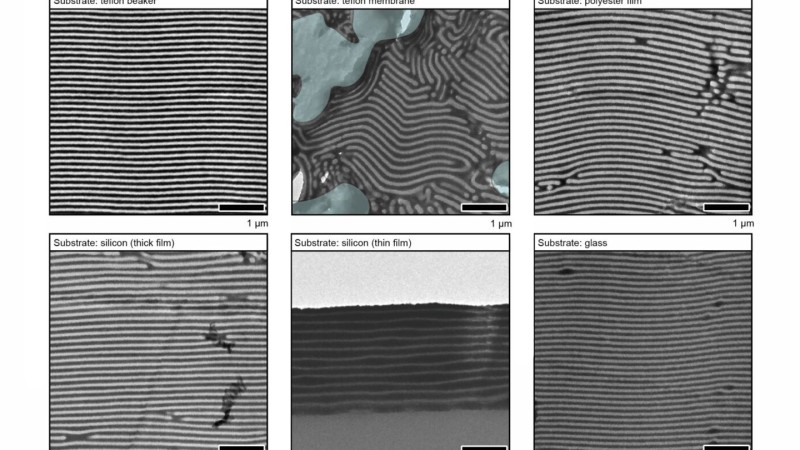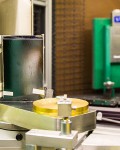Article courtesy of Lawrence Berkeley National Laboratory, by Theresa Duque
A new self-assembling nanosheet could radically accelerate the development of functional and sustainable nanomaterials for electronics, energy storage, health and safety, and more.
Developed by a team led by Lawrence Berkeley National Laboratory (Berkeley Lab), the new self-assembling nanosheet could significantly extend the shelf life of consumer products. And because the new material is recyclable, it could also enable a sustainable manufacturing approach that keeps single-use packaging and electronics out of landfills.
The team is the first to successfully develop a multipurpose, high-performance barrier material from self-assembling nanosheets. The breakthrough was reported today in the journal Nature.
“Our work overcomes a longstanding hurdle in nanoscience – scaling up nanomaterial synthesis into useful materials for manufacturing and commercial applications,” said Ting Xu, the principal investigator who led the study. “It’s really exciting because this has been decades in the making.”
Xu is a faculty senior scientist in Berkeley Lab’s Materials Sciences Division, and professor of chemistry and materials science and engineering at UC Berkeley.
One challenge in harvesting nanoscience to create functional materials is that many small pieces need to come together so that the nanomaterial can grow large enough to be useful. And while stacking nanosheets is one of the simplest ways to grow nanomaterials into a product, “stacking defects” – gaps between the nanosheets – are unavoidable when working with existing nanosheets or nanoplatelets.
“If you visualize building a 3D structure from thin, flat tiles, you’ll have layers up the height of the structure, but you’ll also have gaps throughout each layer wherever two tiles meet,” said first author Emma Vargo, a former graduate student researcher in the Xu group and now a postdoctoral scholar in Berkeley Lab’s Materials Sciences Division. “It’s tempting to reduce the number of gaps by making the tiles bigger, but they become harder to work with,” Vargo said.
The new nanosheet material overcomes the problem of stacking defects by skipping the serial stacked sheet approach altogether. Instead, the team mixed blends of materials that are known to self-assemble into small particles with alternating layers of the component materials, suspended in a solvent. To design the system, the researchers used complex blends of nanoparticles, small molecules, and block copolymer-based supramolecules, all of which are commercially available.
Experiments at Oak Ridge National Laboratory’s Spallation Neutron Source helped the researchers understand the early, coarse stages of the blends’ self-assembly. As the solvent evaporates, the small particles coalesce and spontaneously organize, coarsely templating layers, and then solidify into dense nanosheets. In this way, the ordered layers form simultaneously rather than being stacked one by one in a serial process. The small pieces only need to move short distances to get organized and close gaps, avoiding the problems of moving larger “tiles” and the inevitable gaps between them.
From a previous study led by Xu, the researchers knew that combining nanocomposite blends containing multiple “building blocks” of various sizes and chemistries, including complex polymers and nanoparticles, would not only adapt to impurities but also unlock a system’s entropy, the inherent disorder in mixtures of materials that Xu’s group harnessed to distribute the material’s building blocks.
The new study builds on this earlier work. The researchers predicted that the complex blend used for the current study would have two ideal properties: In addition to having high entropy to drive the self-assembly of a stack of hundreds of nanosheets formed simultaneously, they also expected that the new nanosheet system would be minimally affected by different surface chemistries. This, they reasoned, would allow the same blend to form a protective barrier on a variety of surfaces, such as the glass screen of an electronic device, or a polyester mask.
+Click here to continue reading the full story
The Spallation Neutron Source is a DOE Office of Science user facility.
UT-Battelle manages ORNL for the Department of Energy’s Office of Science, the single largest supporter of basic research in the physical sciences in the United States. The Office of Science is working to address some of the most pressing challenges of our time. For more information, please visit energy.gov/science.







